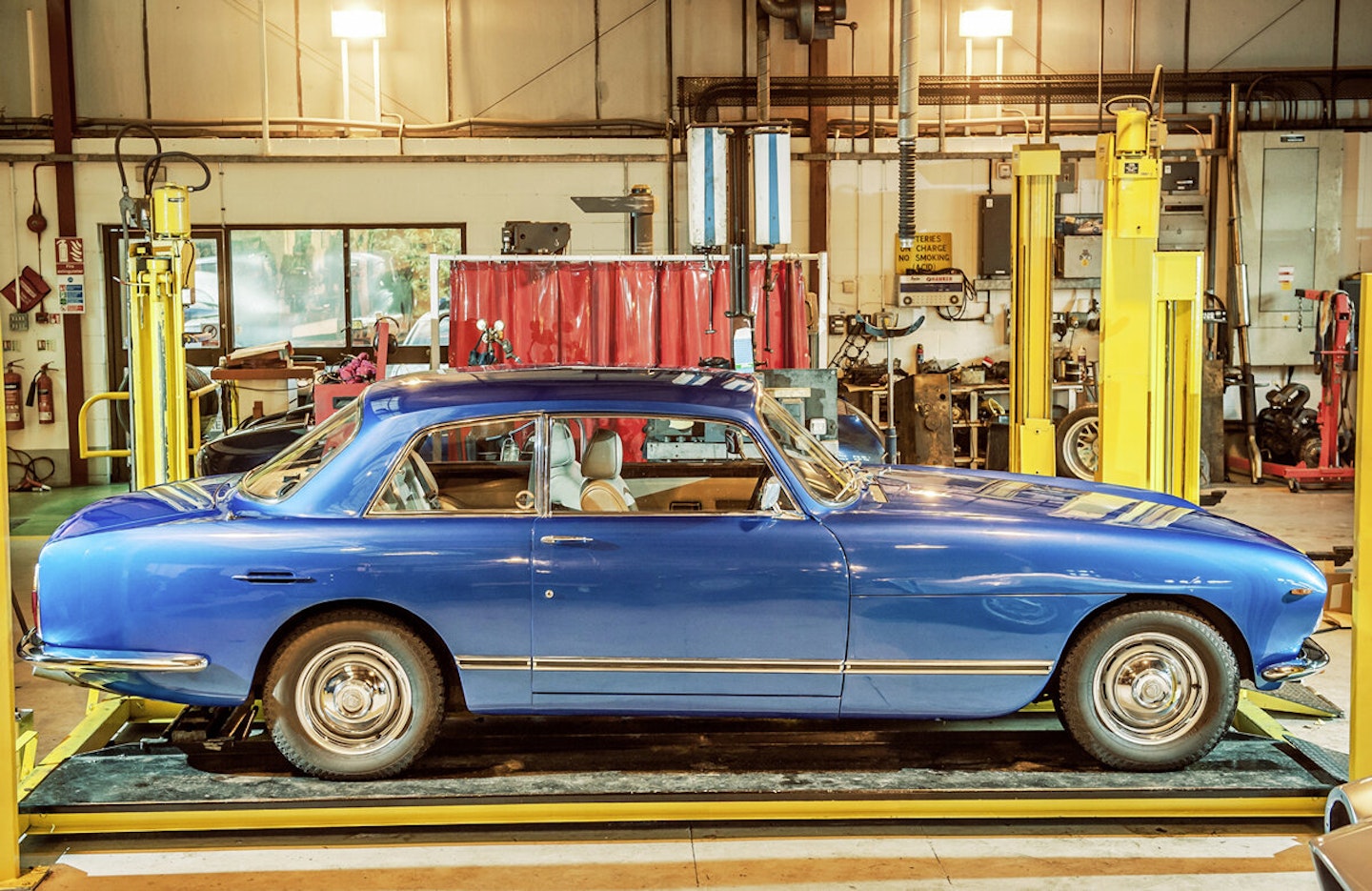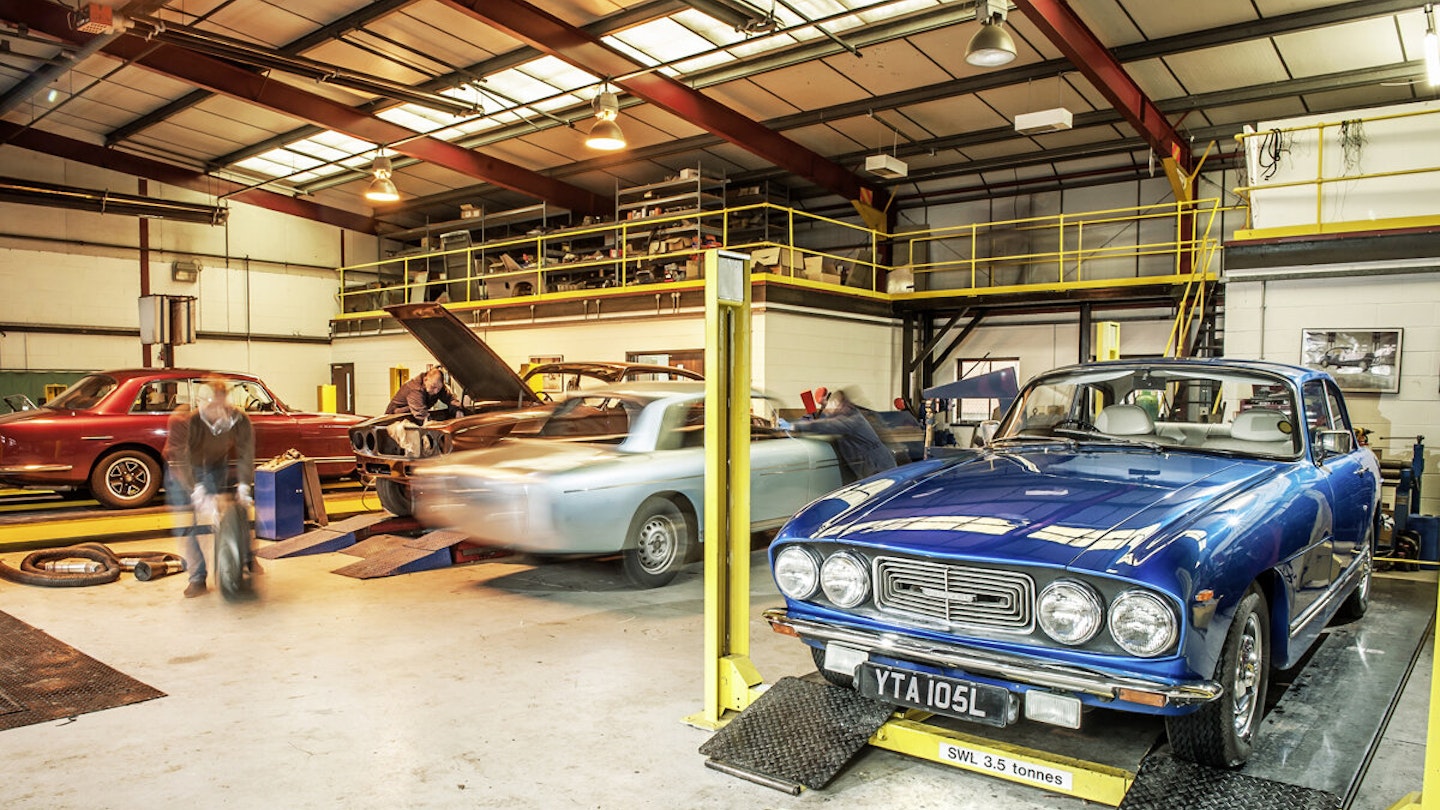Words Russ Smith Photography Laurens Parsons
As if a restoration wasn’t enough, Graeme Leith wanted to turn his 40-year-old Bristol into a 30,000-miles-a-year daily driver
There can surely be no better candidates for restoring a car than the men who built them. And virtually everyone involved in bringing Graeme Leith’s Bristol 411 back to life used to work at Bristol Cars’ factory in Patchway, Bristol. When that company went into administration in 2011, Neil Fender of Fender-Broad took on some ex-Bristol staff. So when Graeme Leith turned up with YTA 105L and a set of requirements some way beyond a normal restoration, nobody was at all fazed. ‘I bought YTA 105L just over two years ago from Bristol Cars as a project. It was just about driveable but…’ Graeme grimaces. ‘The way I square it is I’m spending what I’d lose on new-car depreciation.’ So this hasn’t been an open-chequebook job. Graeme is very clear that he doesn’t like to fix things that aren’t broken. ‘The intention was always to bring it up to a level where I don’t have to worry about it as a daily driver. That meant adding modern touches like better wipers, internally adjustable mirrors, brighter lights in the dashboard. I also had headrests added to the seats.’
Fender-Broad’s Ollie Smith says, ‘Bristols are not treated like most people treat a classic car because Bristol owners use their cars so much and upgrade them to help with that. We believe 90 per cent of 411s are used as everyday vehicles.’ But perhaps not doing 30,000 miles a year – Graeme works as a business consultant and travels widely to meet clients. So it was a challenge – but one both parties felt confident taking on. An added complication is that after a skiing accident Graeme is a little less able than most of us. ‘My legs don’t work below the knees,’ he says, ‘so I have to have an auto with power steering, cruise control and air-con. Thirst was going to be an issue, but Graeme had a plan. ‘We had it converted to run on LPG, then drove it off and on to get that ironed out.’ That caused a few issues, which we’ll come to, but also had an unexpected side effect that also shows the measure of Graeme’s determination. ‘The only downside is that I can’t get my bike in it because the LPG tanks take up too much space. The boot is merely big rather than cavernous.’
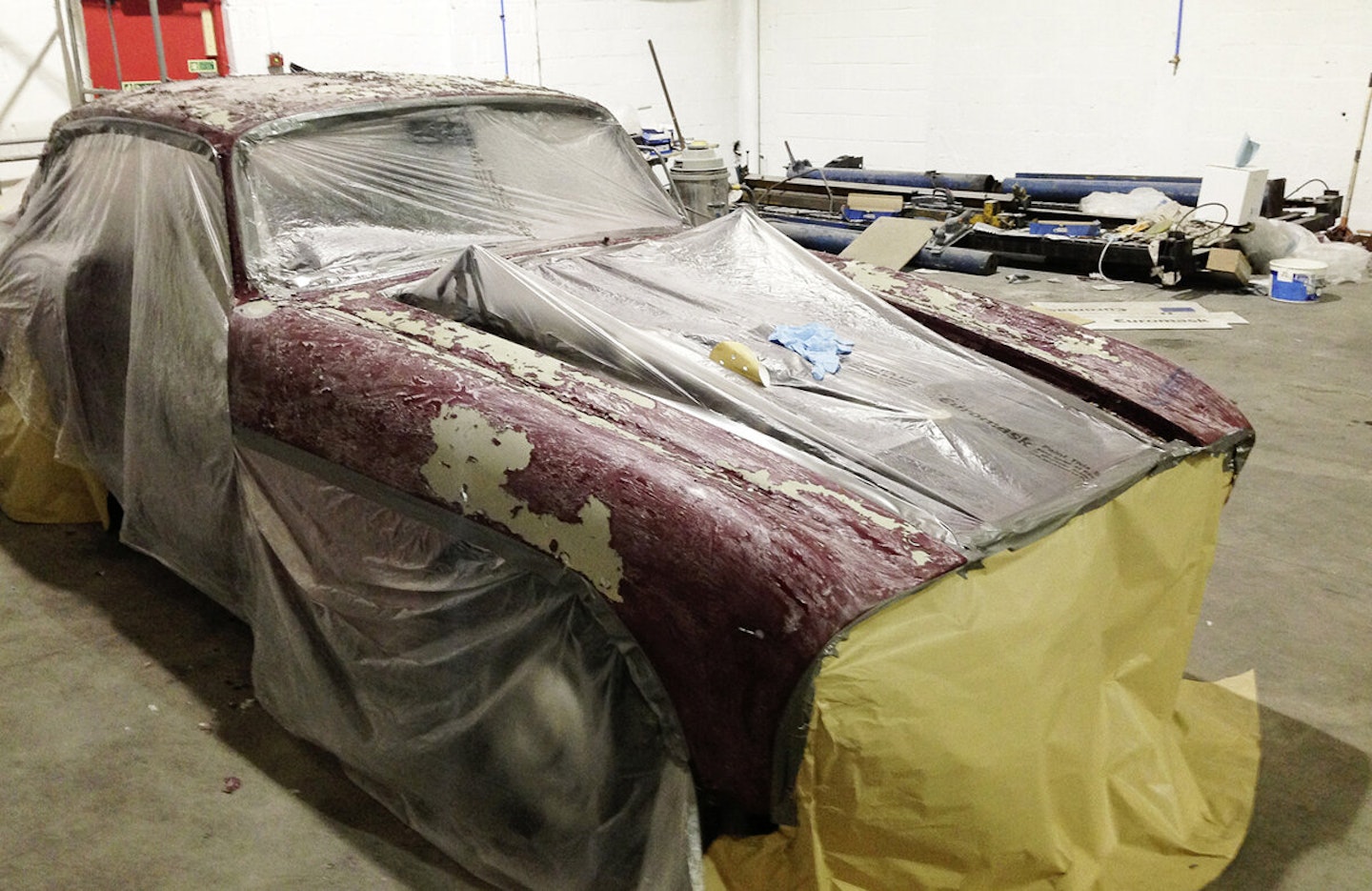
“All the original paint had cracked to some extent”
— Steve Ashley
Stripping
Steve Ashley worked at Bristol Cars for three years and was responsible for stripping the car to ready it for the paint stage, including removing the tired claret it had been finished in at some point. ‘All the original paint had cracked to some extent, especially in the channel along the tops of the front wings. That’s common on 411s, especially when they’ve been repainted in the past. That became clear when we found different colours in different places. When it’s like that it’s best just to take everything back to bare metal. Until you do that, you don’t know what’s going on underneath anyway.’ Ollie Smith adds, ‘We use chemical strippers for paint removal to avoid damage to the aluminium panels, then finish off by hand with wet and dry.’
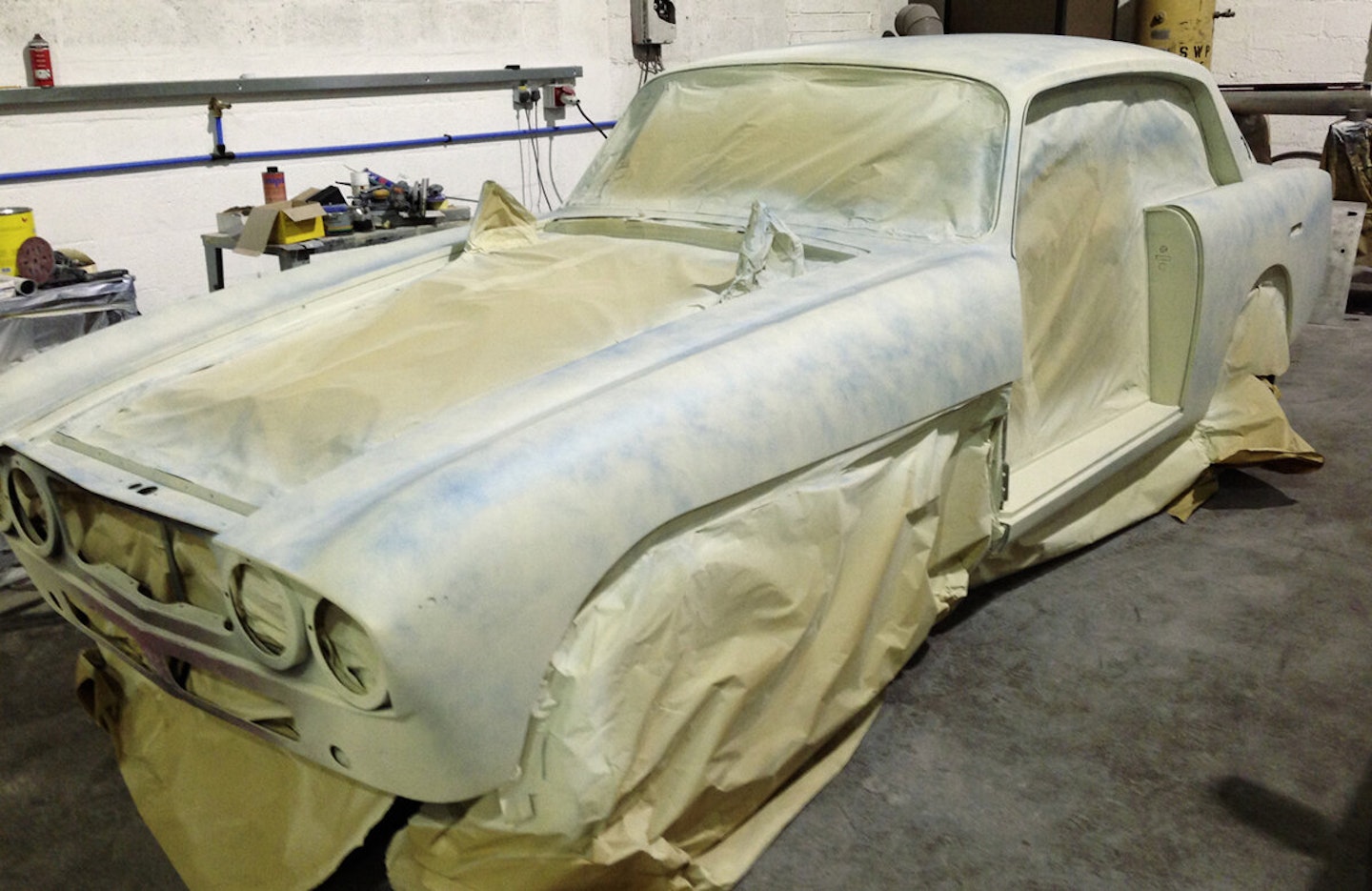
“It all takes about three to five weeks to prep and paint one”
— Darren Jenkins
Bodywork & Paint
Although YTA 105L was deemed to be, ‘structurally quite good for a Bristol’, there are always complications caused by its construction method of aluminium outer panels that attach to a steel frame. That sets up an electrolytic reaction where the two meet, but body and paint man Darren Jenkins just shrugs, ‘It doesn’t matter how bad they are, they can always be brought back to this condition.’ And Darren really knows his stuff having worked at Bristol in the body shop from 1978-85, building 603s and 412s, then again from 2008 until the company closed.
‘With YTA 105L, new aluminium sections had to be TIG-welded into the wings and wheelarches. Where damage was limited to small pockmarks in the surface of the aluminium, those were filled with weld and ground flat.’ That’s a tricky technique to learn as aluminium’s relatively low melting point compared to steel makes it easy to blow holes in the metal.
Even in the Seventies, prepping and painting of most production cars was measured in hours, so it’s a surprise to hear how long a new 411 took to finish. ‘At Bristol the work was done by two guys over three weeks, one working on each side of the car. Nowadays with restorations it all takes about three to five weeks to prep and paint one, depending how bad it is in the first place.’ YTA 105L was at the longer end of the scale.
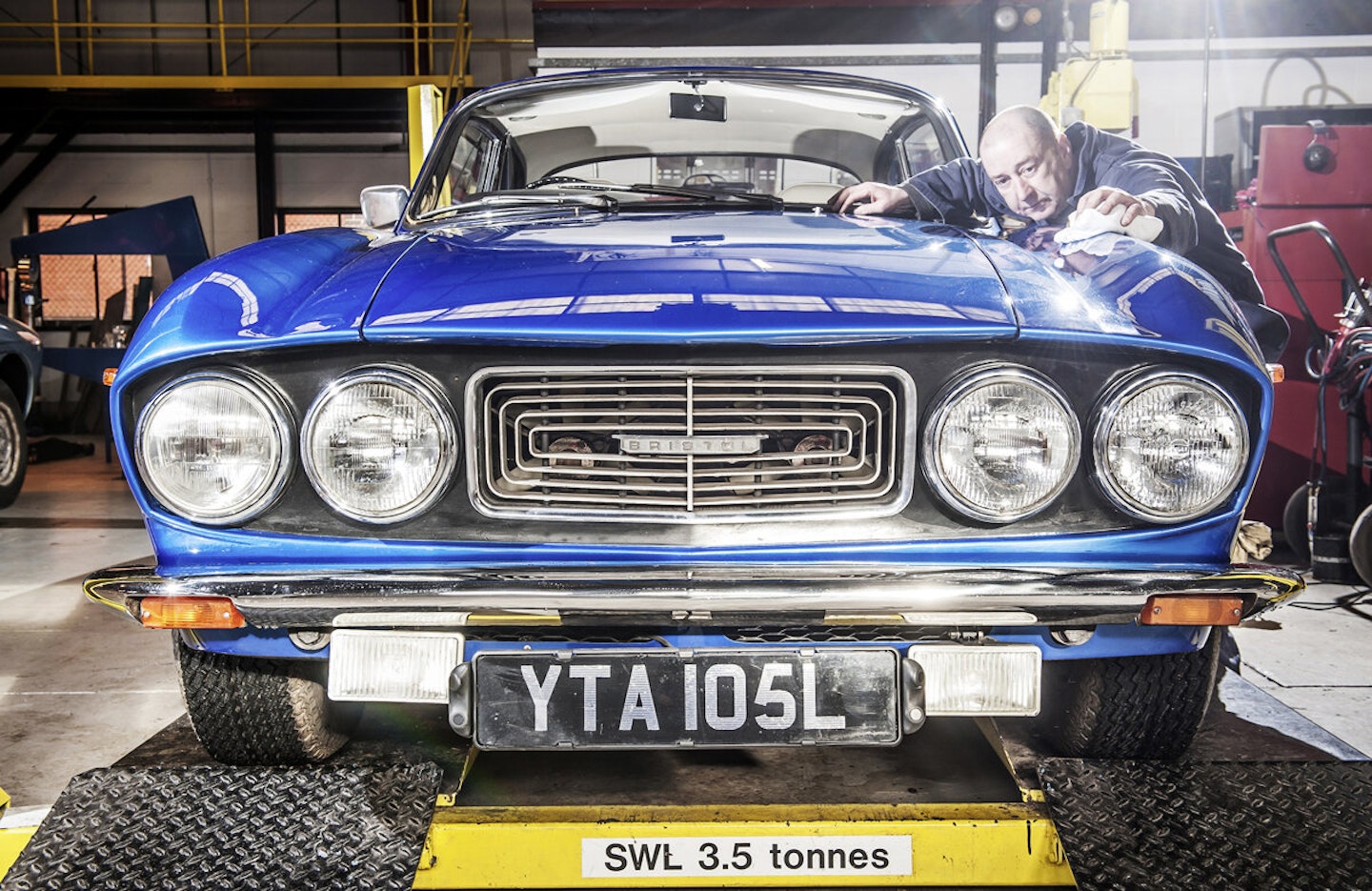
“Bristols have to be done in a certain way, and with great attention to detail”
— Darren Jenkins
Darren hasn’t forgotten any of his background, so the cars painted by him are worked on in exactly the same way that Bristols always were. He says, ‘Bristols have to be done in a certain way, and with great attention to detail. So I painted the insides of all the removable panels off the car – we lay them flat on sheets to do that. Once they were refitted and lined up all the inside areas were masked up to avoid contamination by overspray. You need to use the proper etch primers for aluminium, and abrade the ally all over the car to get good adhesion, otherwise you’ll find the paint lifting sometime later on. But first these cars need a lot of filler work. They always did, to cover the various welded joins and all the typical nicks. Some whole panels had to be skimmed with filler then flatted back. Once that was done it was given a coat of etch-primer then four coats of high-build two-pack primer. These are machined back with a DA sander, then another two coats are laid on and hand-blocked. You can’t rush things – with full drying times in between, all that took weeks. But the end result is a perfect surface for the top coat.’
For that Graeme chose a special formulation from the colour chart. Though modern-looking it is actually from the Sixties and known simply as Bristol Blue. For Darren this was the straightforward part of the job, applying base and clear coats, then hand-flatting them once it had all hardened off.
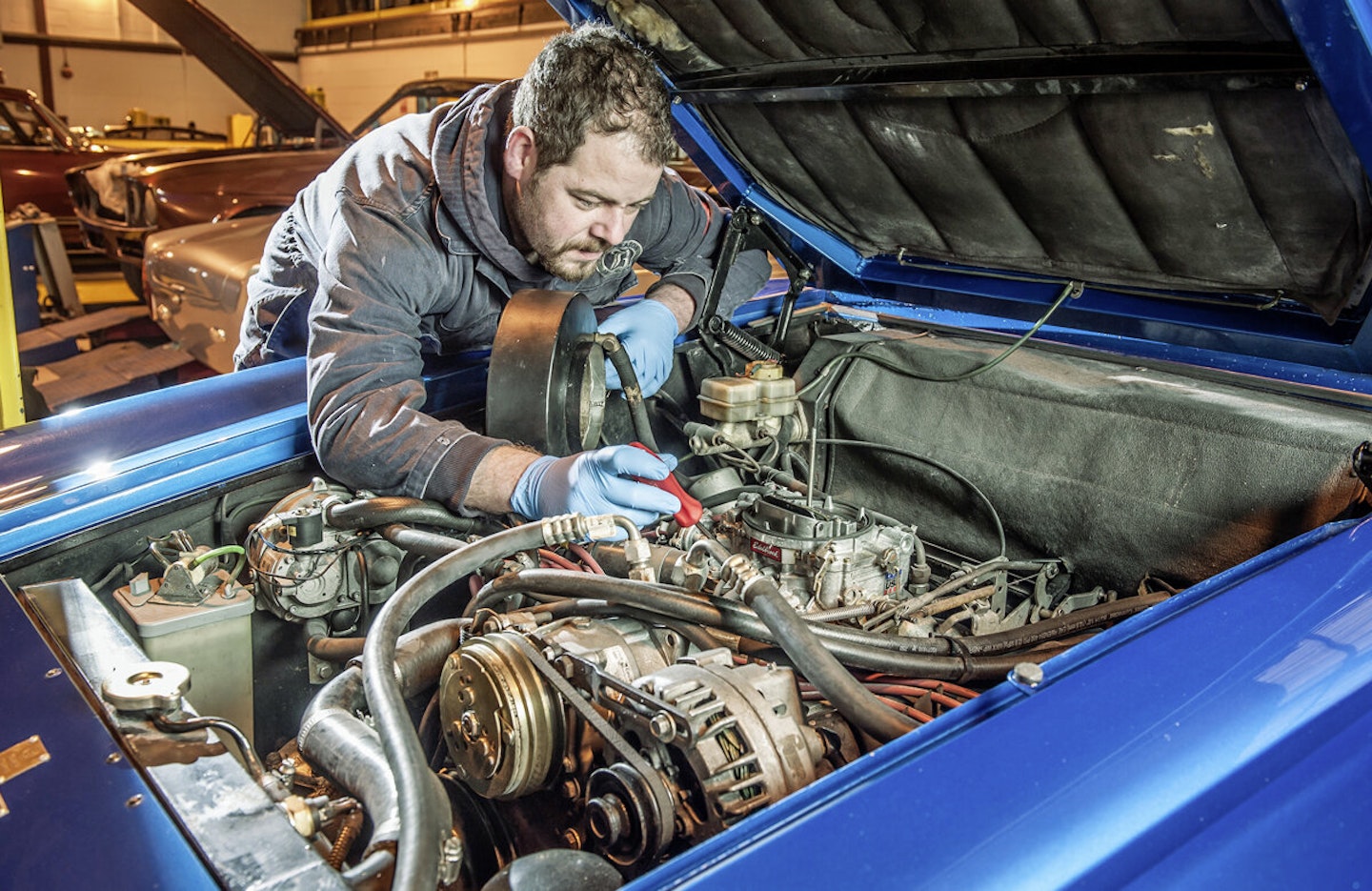
“We went right through and re-did the system”
— Matt Puszkar
Running Gear
Fitting the LPG system was a specialist area Fender-Broad didn’t handle, so the task was farmed out to a company in London.
However, Fender-Broad did sort out an interesting issue that brought YTA 105L to a halt soon after it was completed – and on its way to our photo shoot. Though the rest of the engine was deemed fit and merely given a good service – Chrysler V8s can clock up huge mileages without fuss – the original carburettor was worn out. It was replaced by a brand-new Edelbrock 1406 Performer four-barrel carburettor. A good unit, but with a fatal flaw in this case. Ollie Smith explains. ‘It transpired that when a switch from petrol to LPG was made, the sudden drop in temperature caused the hollow brass carburettor floats to implode. We took it upon ourselves to source a Holley 2245 two-barrel carburettor with foam-filled floats.’ Like the engine, the Chrysler Torqueflite automatic gearbox passed scrutiny, but the essential power- assisted steering was definitely struggling on the ‘assisted’ part of its job title. ‘We went right through and re-did the system, but it turned out to be a failed pump seal,’ says Matt Puszkar (above), another former Bristol employee. The Bristol 411 uses a ZF system that is shared with some Aston Martin models, so at least parts are easy enough to get hold of.
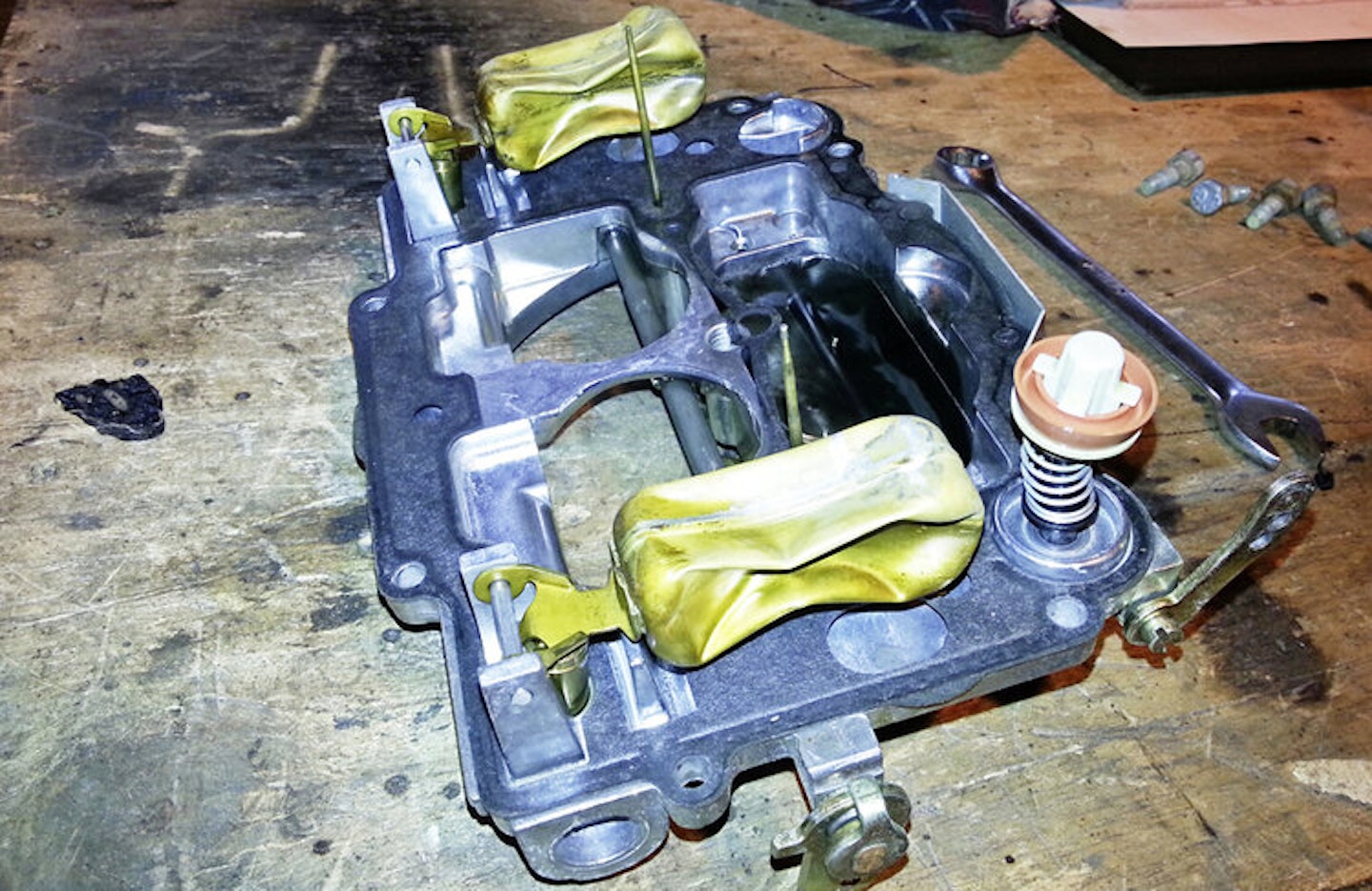
“All the chrome on the car was very tarnished”
— Matt Puszkar
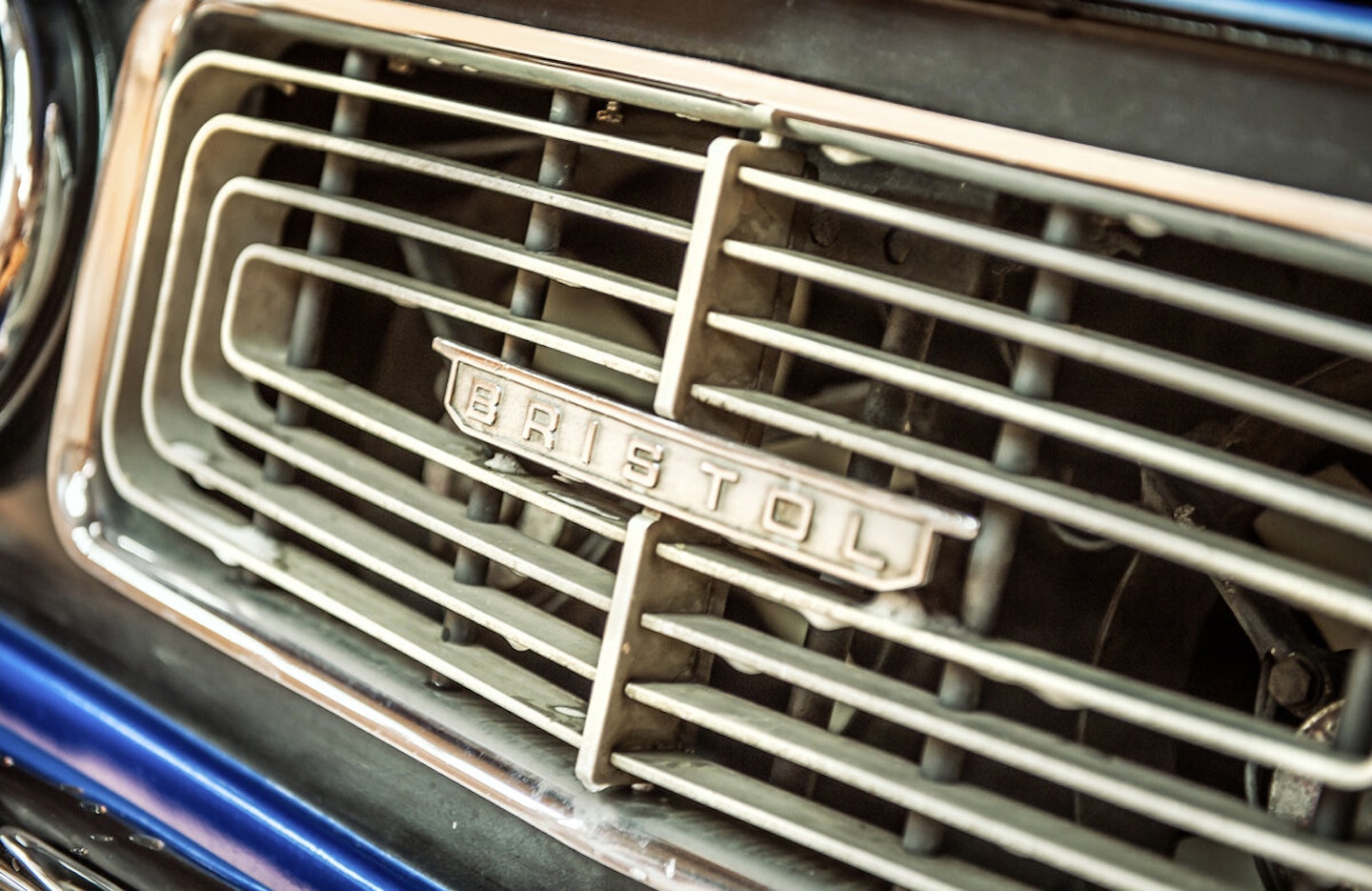
Brightwork
There’s a lot of shiny stuff on a 411, and none of it on YTA 105L looked good. Sorting all this out fell to Matt Puszkar. ‘I was with Bristol for eight years, both at the London dealership and at Patchway.
‘I was officially a coachbuilder but this being Bristol I also worked on prototypes, dashboards, seats – in fact everything except brakes. Though they are actually very basic cars they can be a pain in the backside to work on, and sourcing some parts can be a nuisance – but I love to see the finished job.
‘All the chrome on the car was very tarnished, and the mild steel bumpers were beyond saving. We got a set of new stainless steel bumpers and had them chromed.’ That’s no cheap undertaking – a pair of stainless bumpers from Harrington Group is £1045, but at least they are available. Much of the other chrome was saved. ‘We cleaned it up with fine steel wool soaked with polish,’ says Matt. That sounds drastic but the results speak for themselves.
That just left the steel wheels to be blasted and painted in a shade of silver to suit the blue bodywork, then the stainless steel hubcaps and trim rings were brought back to life by the method described in our Expert Tip below. A set of new rubber brought another shock to Graeme’s wallet. ‘The correct Dunlop 205/70V R15 tyres are expensive and hard to get. They cost £200 each – it’s because of the speed rating.’
On a Bristol intended for more leisurely purposes that’s a corner some might feel okay about cutting, so to speak. But this is, after all, a relatively heavy 140mph machine, so Graeme rightly wasn’t taking any chances with his daily driver.
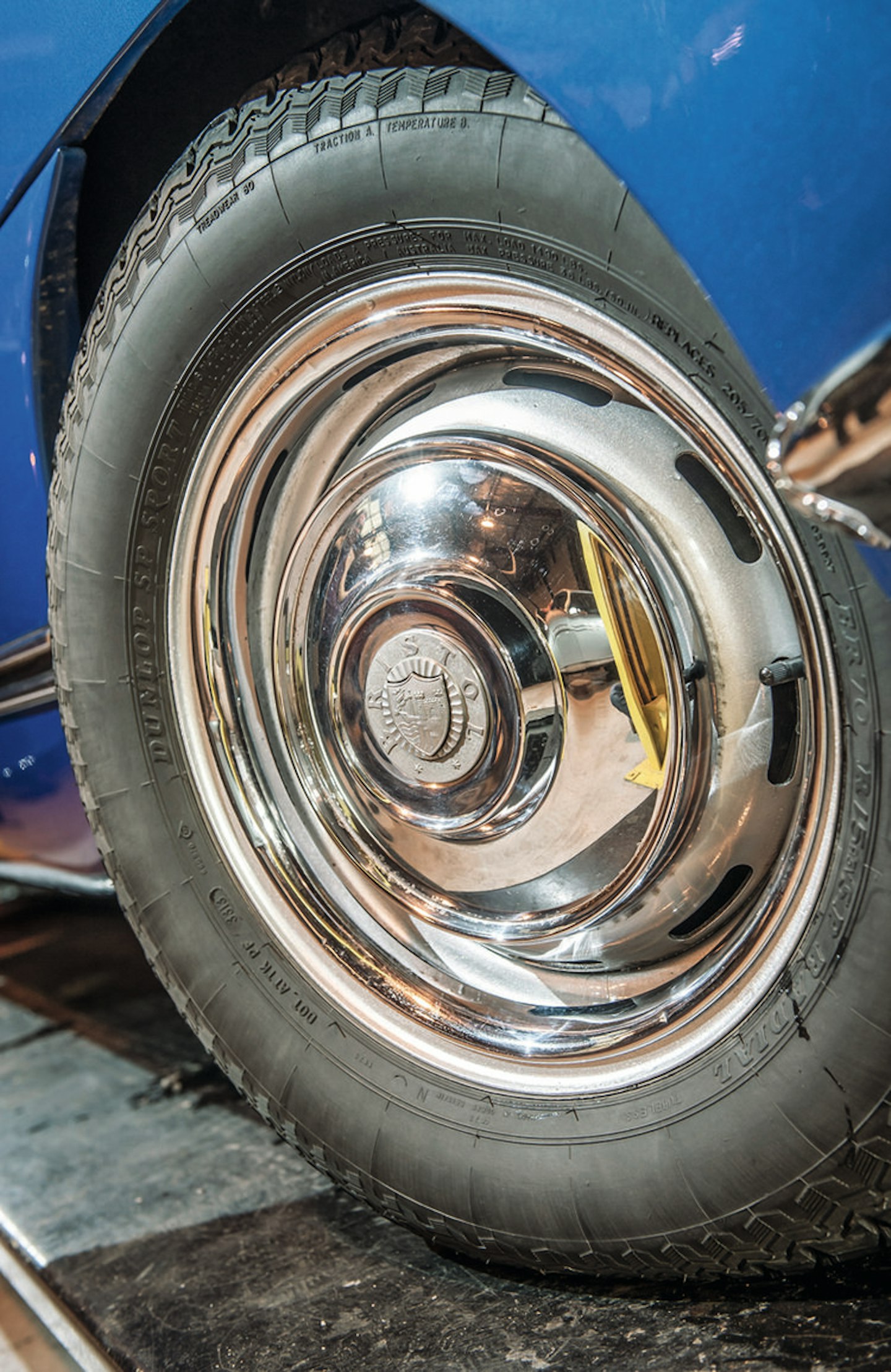
Expert tip
The stainless steel trim used widely on cars like the Bristol 411 may not pit or corrode like other materials, but it does dull with age and the side trims pick up little parking dings. These can be tapped out from behind with a variety of drifts, then the shine restored to the piece by using a double-action sander with a hard polishing pad.
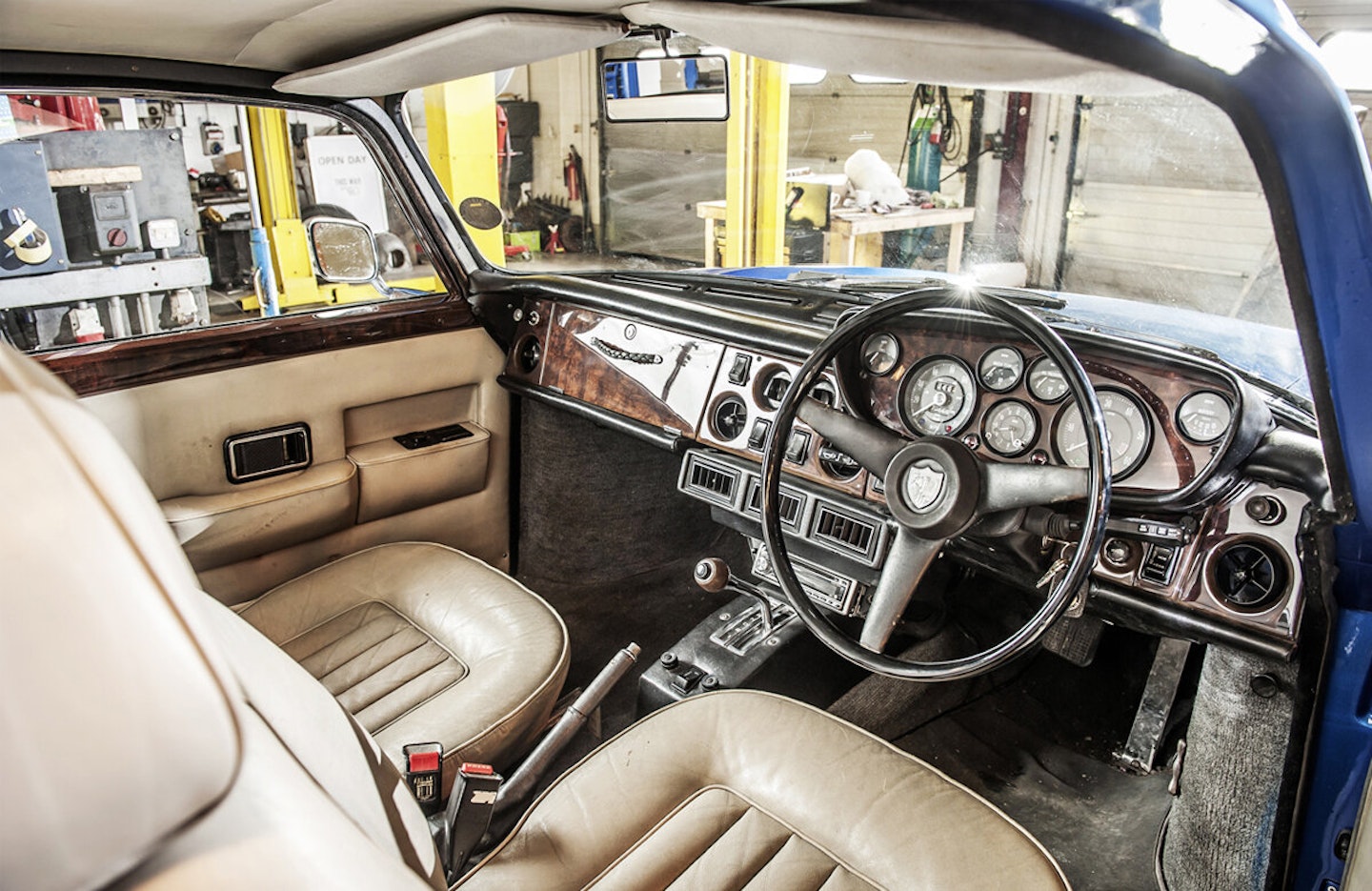
“You just have to take your time and be methodical”
— Steve Ashley
Interior
The plan for this stage of the car’s life was to refurbish rather than retrim the interior, partly for cost reasons, partly as a nod to the car’s heritage, and partly because it didn’t look all that bad. Largely that worked – the leather on the seats cleaned up well, and as Matt Puszkar says, ‘I prefer to see seats that look used.’ A set of headrests in a matching colour were sourced from a Vauxhall Astra MkIII, re-covered in matching leather and the seat frames adapted to accept their fitting.
Sadly the dashboard was beyond redemption – the cracked lacquer and subsequent discolouration being just too bad. Therefore, a new one in walnut was sourced and fitted. ‘You just have to take your time and be methodical,’ says Steve Ashley.
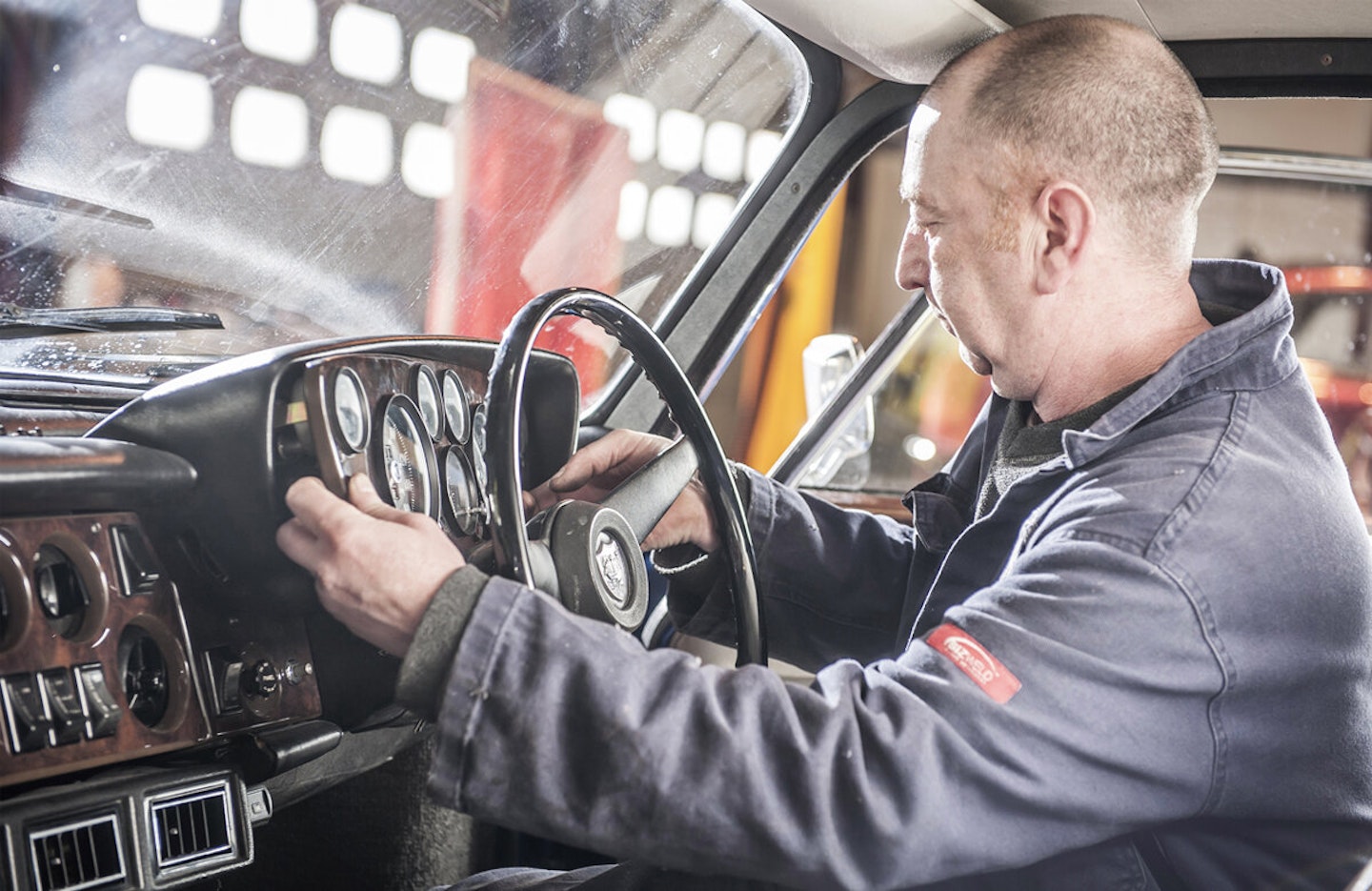
“I’m not going to be precious about it – it’s for using”
— Graeme Leith
The results
We saw YTA 105L just a week after its completion, and it was good to see that Graeme hadn’t been distracted from his original plans once confronted by the car’s stunning appearance. ‘I’ve done 650 miles since picking it up and have been impressed with the ease of using the car. The finish looks fantastic but I’m not going to be precious about it – it’s for using. The next step will be a cabin refurbishment – seats, carpets, door panels, and I might change to a woodrim wheel. And some more modern touches like a delay switch for the interior light. It’s not as easy to jump into and drive as an Audi, but we’re getting there.’
Owner Graeme’s vowed to use his Bristol rather than save it for shows
